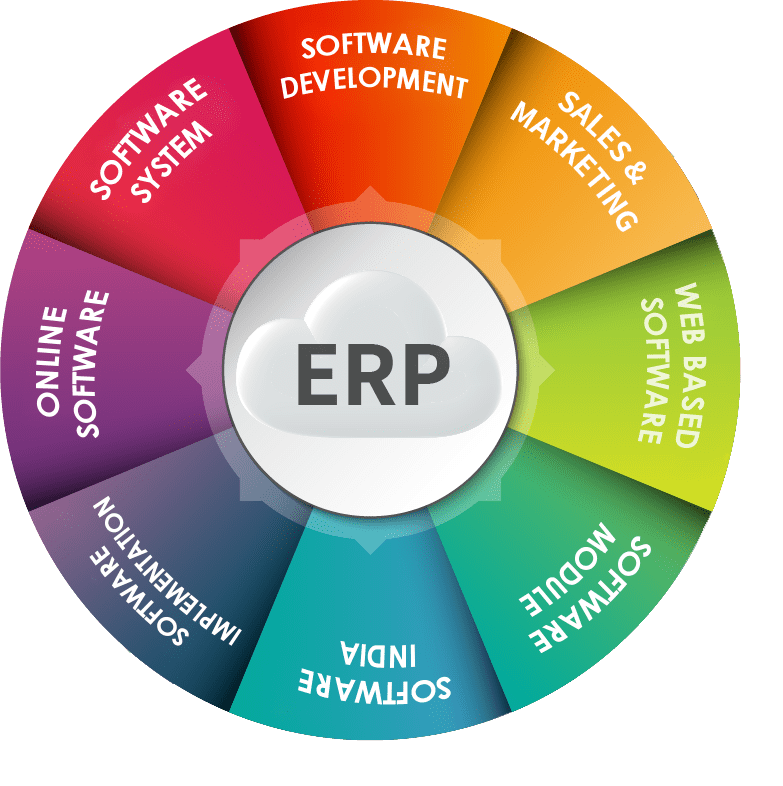Revolutionizing Education with ERP Solutions: A Comprehensive Guide
In today's fast-paced digital age, educational institutions are constantly seeking ways to streamline their operations, enhance productivity, and improve overall efficiency. One powerful tool that has emerged to meet these needs is Enterprise Resource Planning (ERP) solutions. These sophisticated software systems have revolutionized the way educational institutions manage their administrative tasks, academic processes, and student data. In this comprehensive guide, we will explore the benefits, features, and implementation of ERP solutions tailored specifically for educational institutions.
Understanding ERP Solutions for Educational Institutions
ERP solutions for educational
institutions are comprehensive software platforms designed to integrate
and automate various administrative and academic functions within an
educational setup. These systems provide a centralized database that
facilitates efficient management of student records, financial data, human
resources, academic scheduling, and more.
Key Features of ERP Solutions for Educational Institutions
Student Information Management:
One of the primary features of ERP solutions for educational institutions is
the centralized management of student information. This includes admission
records, enrollment details, academic performance, attendance tracking, and
disciplinary history. With ERP systems, administrators can easily access and
update student records, ensuring data accuracy and security.
Academic Planning and Scheduling:
ERP solutions offer robust tools for academic planning and scheduling.
Administrators can create and manage course schedules, assign classrooms and
resources, and track faculty availability. These systems also facilitate
student registration and course enrollment, streamlining the entire academic
process.
Financial Management: ERP
solutions streamline financial management processes such as budgeting,
accounting, invoicing, and payroll. Administrators can track revenue, expenses,
and funding sources, ensuring financial transparency and compliance.
Additionally, these systems can generate detailed financial reports and
analytics to aid in decision-making.
Human Resources Management: ERP
solutions automate human resources management tasks such as recruitment,
onboarding, performance evaluation, and staff development. These systems
maintain employee records, track leave and attendance, and streamline payroll
processing. By centralizing HR functions, ERP solutions help educational
institutions optimize their workforce management practices.
Parent and Teacher Portals: Many ERP solutions include dedicated portals for parents and teachers, enabling seamless communication and collaboration. Parents can access their child's academic progress, attendance records, and school announcements through a secure online portal. Similarly, teachers can communicate with parents, share assignments, and provide feedback on student performance, enhancing parental involvement in education.
 |
| ERP Solutions For Educational Institutions |
Analytics and Reporting: ERP solutions offer powerful analytics and reporting tools that provide valuable insights into various aspects of institutional performance. Administrators can generate customized reports on student outcomes, financial metrics, enrollment trends, and more. These insights enable data-driven decision-making and continuous improvement initiatives.
Benefits of ERP Solutions for Educational Institutions
Increased Efficiency: By
automating routine administrative tasks and integrating disparate systems, ERP
solutions significantly increase operational efficiency within educational
institutions. This allows administrators, faculty, and staff to focus more time
and resources on core educational activities.
Improved Data Accuracy and
Security: Centralized data management ensures that student records, financial
information, and other sensitive data are accurate, up-to-date, and secure. ERP
solutions employ robust security measures such as data encryption, user
authentication, and access controls to protect against unauthorized access and
data breaches.
Enhanced Collaboration: ERP
solutions facilitate seamless collaboration among stakeholders, including
administrators, faculty, students, parents, and external partners. By providing
a centralized platform for communication, document sharing, and task
coordination, these systems promote collaboration and teamwork across the
educational community.
Better Decision-Making: With
access to real-time data and advanced analytics, administrators can make
informed decisions that drive positive outcomes for their institutions. Whether
it's optimizing resource allocation, identifying areas for improvement, or
forecasting future trends, ERP solutions empower educational leaders to make
data-driven decisions that support their strategic objectives.
Scalability and Flexibility: ERP
solutions are highly scalable and adaptable, allowing educational institutions
to accommodate growth, changing requirements, and evolving technologies.
Whether it's opening new campuses, expanding program offerings, or integrating
with third-party applications, ERP systems can scale to meet the needs of
institutions of all sizes.
Cost Savings: While the initial
investment in an ERP solution may seem significant, the long-term cost savings
can be substantial. By streamlining processes, reducing manual labor, and
minimizing errors, ERP solutions help educational institutions optimize their
resources and achieve greater cost efficiency over time.
Implementing ERP Solutions: Best Practices
Assess Your Institution's Needs:
Before implementing an ERP solution, conduct a thorough assessment of your
institution's needs, goals, and challenges. Identify key stakeholders, gather
requirements, and prioritize features and functionalities that are essential
for achieving your objectives.
Select the Right Vendor: Choose a
reputable vendor with experience in providing ERP solutions for educational
institutions. Evaluate vendors based on factors such as product functionality,
reliability, customer support, and scalability. Request demos, reference
checks, and proposals to ensure that you select the right vendor for your
institution.
Plan for Implementation: Develop
a detailed implementation plan that outlines timelines, milestones, and
responsibilities. Assign a dedicated project team with representatives from
various departments to oversee the implementation process. Communicate
regularly with stakeholders and provide training and support to ensure a smooth
transition to the new ERP system.
Customize and Configure: Work
closely with your chosen vendor to customize and configure the ERP solution to
meet your institution's specific needs. Tailor workflows, forms, and reports to
align with your existing processes and requirements. Leverage the flexibility
of the ERP system to accommodate unique institutional workflows and
preferences.
Train Users: Provide
comprehensive training to administrators, faculty, staff, and other users to
ensure that they are proficient in using the ERP system. Offer both initial
training sessions and ongoing support resources to address any questions or
concerns that may arise. Encourage feedback and participation to promote user
adoption and satisfaction.
Monitor and Evaluate Performance:
Continuously monitor the performance of the ERP solution and gather feedback from
users to identify areas for improvement. Track key performance indicators
(KPIs) such as system uptime, data accuracy, user satisfaction, and process
efficiency. Use this information to make adjustments and enhancements as needed
to optimize the system's performance.
Conclusion

Comments
Post a Comment